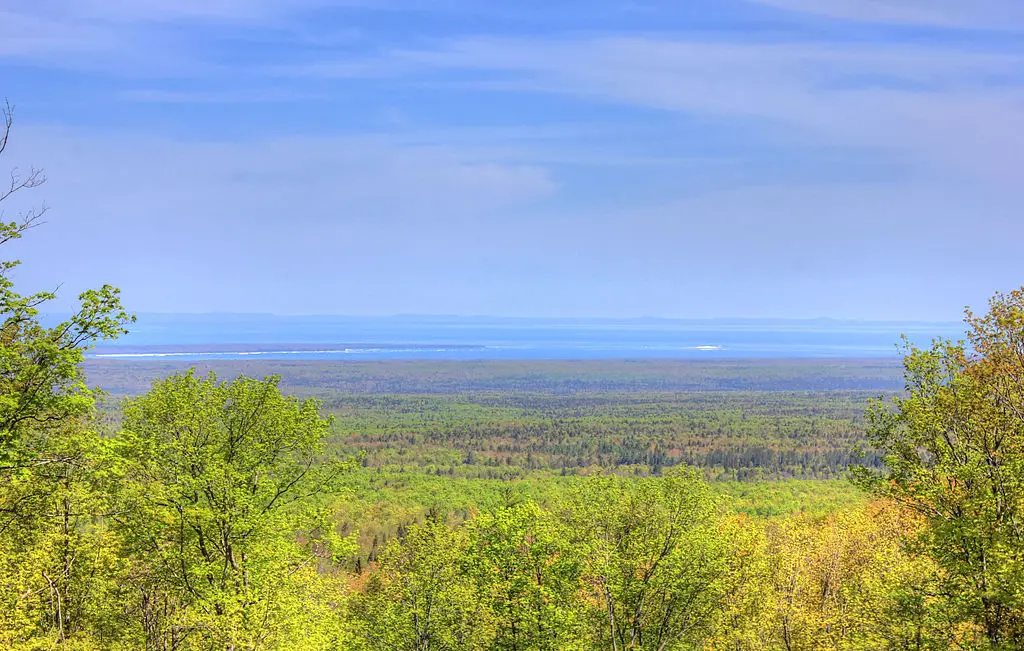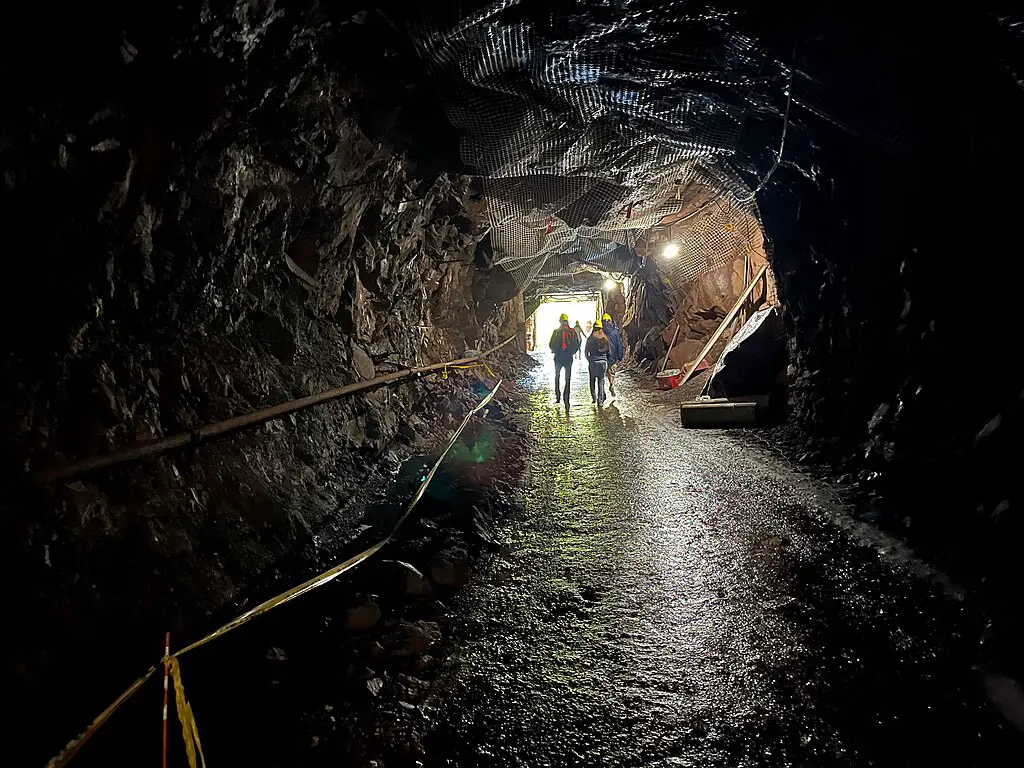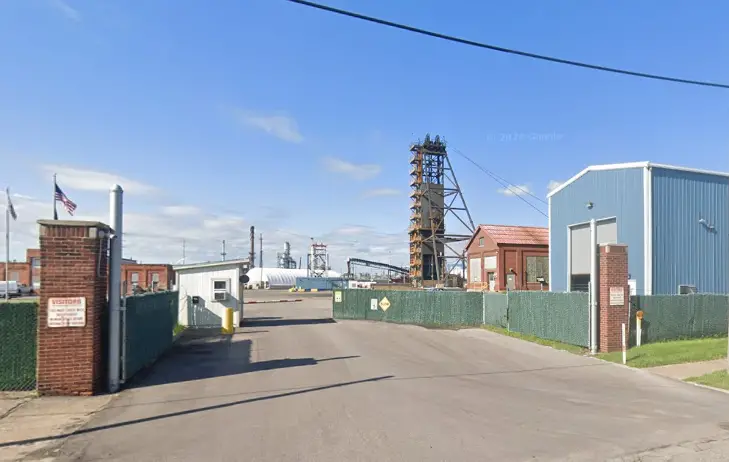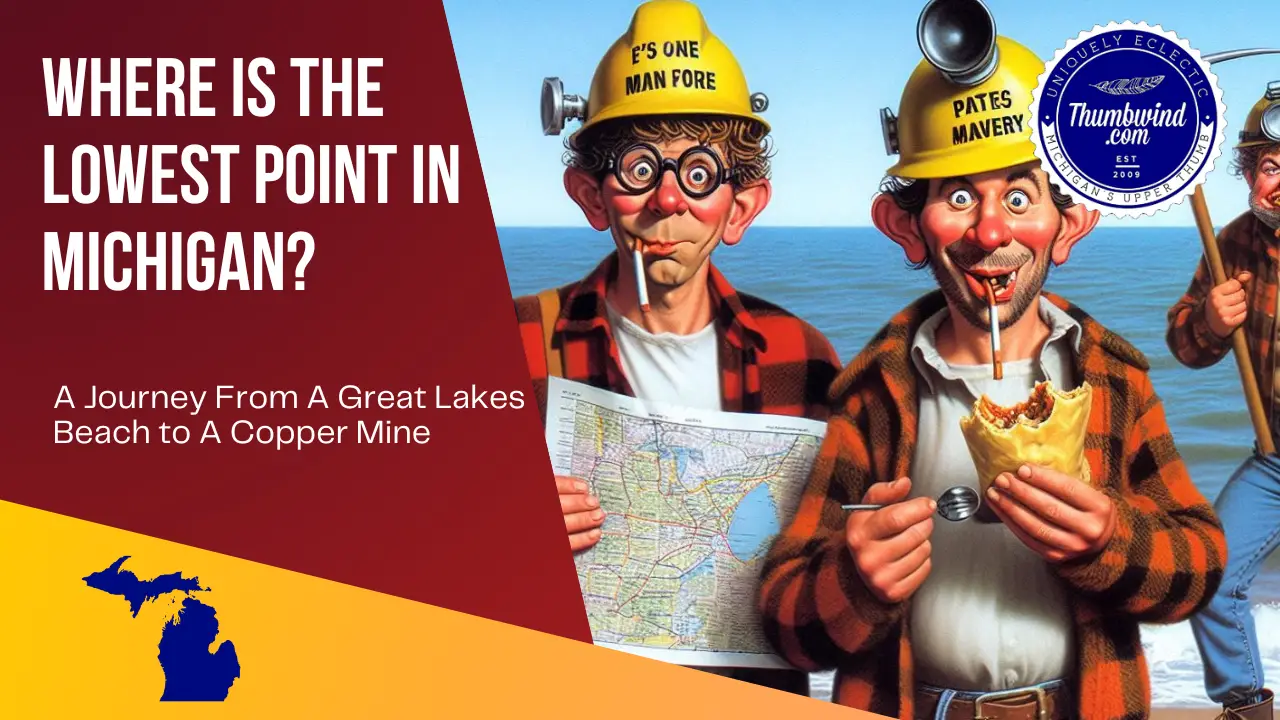Michigan’s got it all—beautiful beaches, endless forests, quirky small towns, and a history so rich you’d think it was mined straight from the ground. Actually, a lot of it was mined. From Mount Arvon’s heights to Lake Erie’s shores, the state’s geography is as varied as its past. But what’s the lowest point in Michigan? Turns out, that depends on how you define “low.”
The High and Low Points of Michigan
In this story, we’re taking you on a ride from Michigan’s topographical low point at Lake Erie—a peaceful beachside escape—to the deepest corners of the state’s underground world. Along the way, we’ll unearth stories of copper and salt mines that dug deep into Michigan’s industrial soul. So pack your curiosity (and maybe a flashlight), and let’s go.
Lake Erie: Michigan’s Low Point—Geographically, Anyway

When it comes to natural low points, Michigan keeps things simple. The state bottoms out at Lake Erie, a spot just 571 feet above sea level. It’s where southeastern Michigan meets the lake, creating a shoreline that’s as flat as a pancake—and just as good for laying back and relaxing.
But let’s not ignore its importance. Lake Erie, part of the Great Lakes system, is a lifeline for the region. It supports agriculture, fishing, and shipping while serving as a picturesque backdrop for lakeside towns. This isn’t just geography—it’s a cornerstone of Michigan’s identity.
Comparing Heights: Lake Erie vs. Mount Arvon

For contrast, Michigan’s highest point, Mount Arvon, towers 1,979 feet above sea level in the Upper Peninsula. What is the difference between the two? About 1,400 feet—small potatoes compared to states like Colorado but significant for a state that’s otherwise pretty flat. From mountain trails to sandy beaches, Michigan covers a lot of ground.
Going Underground: Michigan’s Other Low Points
If you thought the low point story ended at Lake Erie, think again. The real depths of Michigan’s story lie beneath the surface—literally. Michigan’s mining history runs deep, from copper in the Upper Peninsula to salt below Detroit. These mines are the “practical low points” of the state, and they’re worth exploring.
Copper Mines: Striking It Rich in the Keweenaw

Head up to the Keweenaw Peninsula in the Upper Peninsula, and you’ll find yourself in Copper Country. This area was the heart of Michigan’s 19th-century copper boom, which powered America’s growing cities with enough wiring to keep Edison happy.
The Quincy Mine: A Hole in the Ground That Changed History

The Quincy Mine, near Hancock, is one of Michigan’s most famous. At its deepest, it plunges 9,260 feet underground. That’s almost two miles straight down—a depth that’s hard to imagine without feeling a little claustrophobic. Nicknamed “Old Reliable,” the mine churned out copper for nearly 100 years, making it a cornerstone of Michigan’s economy.
Mining back then wasn’t glamorous—it was back-breaking, dangerous work. But it built towns, fueled industries, and left a legacy that still resonates today. Want a taste of that history without all the hard labor? The Quincy Mine now offers tours where you can descend into its historic tunnels. Bonus: it’s a great place to cool off in the summer.
Salt Mines: Detroit’s Hidden Treasure
While copper gets most of the glory, there’s another mineral quietly holding its own in Michigan—salt. Beneath the bustling streets of Detroit lies the Detroit Salt Mine, a massive underground operation that few people even know exists.
What’s Under Detroit? A Lot of Salt

The Detroit Salt Mine sits 1,200 feet underground, making it one of the state’s “low points” in more ways than one. Unlike copper mining, which has largely faded into history, salt mining is still going strong. The mine produces road salt to keep Michigan’s highways safe during those infamous winters, along with salt for industrial uses.
If you’ve driven on an icy road in Michigan, you’ve probably benefited from the Detroit Salt Mine—even if you didn’t realize it. Talk about unsung heroes.
From the Past to the Present
Today, Michigan’s “lowest points” are thriving in new ways. Lake Erie’s shoreline is a hotspot for fishing, boating, and birdwatching. The Quincy Mine, once a hub of industrial activity, now draws visitors eager to learn about Michigan’s mining heritage. Even the Detroit Salt Mine, though not open to the public, continues to support the state’s economy from the shadows.
Of course, with great power comes great responsibility. Mining and industrial activity have environmental consequences, and Michigan has learned the hard way how important it is to balance resource extraction with sustainability.
FAQ: Lowest Point in Michigan
How much salt is in the Detroit Salt Mine, and why is it significant?
Why is Michigan’s copper mining history important?
Wrapping It Up About The Lowest Point in Michigan
So, where’s the lowest point in Michigan? Technically, it’s Lake Erie. But dig a little deeper—literally—and you’ll find that Michigan’s story is just as much about what’s beneath the surface.
From sandy beaches to underground tunnels, Michigan’s low points reveal a state that’s as diverse as it is fascinating. Whether you’re a history buff, a nature lover, or someone who enjoys a good story, these places have something for you.
So, next time you’re planning an adventure, why not check out Lake Erie’s tranquil shores or take a tour of the Quincy Mine? You’ll find Michigan’s history waiting for you—sometimes just beneath your feet.



